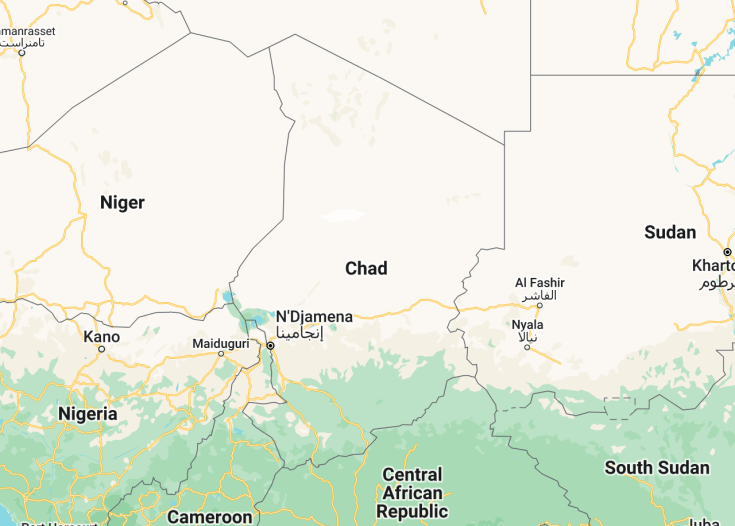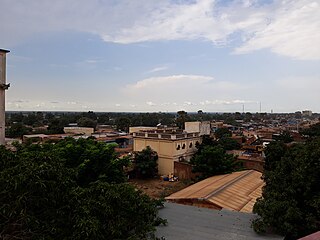Chad, located in north-central Africa, paints a vivid picture of a land where vast deserts meet abundant wetlands. A mosaic of cultures and traditions, its landscapes range from the arid Sahara to the fertile plains around Lake Chad. With a history spanning ancient empires, Chad offers a blend of archaeological wonders, nomadic heritage, and modern aspirations. A journey here promises encounters with timeless traditions and untouched natural beauty.
When visiting, it’s essential to respect local customs. Dress modestly and always ask permission before photographing individuals or ceremonies.
Spend a night under the stars in the Sahara Desert for an unforgettable and awe-inspiring experience. It’s the perfect opportunity to disconnect from the modern world and reconnect with nature.
How to best experience Chad?
Search for Tickets, tours, and activities in Chad using direct search on the following providers:
GetYourGuide.com Viator.com Trip.com Expedia.com Tiqets.com Ctrip.com (中文)
Top cities to visit in Chad
Discover the best cities of Chad and best places to visit.
Chad: The Hidden Gem of Africa
| Capital | N’Djamena |
| Time in Chad | GMT+1 |
| Language spoken | French, Arabic, Sara |
| Population | 16,877,357 (World Bank, 2020) |
| Religion | Islam (58.1%) Christianity (34.2%) Indigenous African Religions (4.6%) Other (3.1%) |
| Currency | Central African CFA franc (XAF) |
| Airports | N’Djamena International Airport Sarh Airport |
Chad, a nation steeped in history, is a gem in the heart of north-central Africa. Its terrain tells tales of ancient civilizations, with relics strewn across its vast landscapes. From the shifting sands of the Sahara to the fertile grounds near Lake Chad, the country has been home to diverse communities for millennia. Nomadic tribes have crisscrossed its expanse, leaving behind a legacy of vibrant cultures and traditions. Historically a crossroads of various empires, Chad has seen the rise and fall of rulers, each leaving an indelible mark. Its rich tapestry is woven with threads of ancient trade routes, fierce battles, and a continuous quest for identity in the modern age.
Where is Chad located?
Chad is situated in north-central Africa, bordered by Sudan to the east, the Central African Republic to the south, Cameroon and Nigeria to the southwest, Niger to the west, and Libya to the north.
What is Chad famous for?
Chad is famous for its diverse wildlife and natural beauty. The Zakouma National Park is a haven for nature enthusiasts, with its vast plains, acacia forests, and abundant wildlife including elephants, lions, and giraffes. Lake Chad, one of the largest lakes in Africa, is a popular destination for birdwatching and fishing. Chad is also known for its vibrant cultural festivals, such as the Gerewol Festival, where the Wodaabe people showcase their traditional dances and rituals.
History
Prehistoric Times: Early Inhabitants
Chad’s history reaches back to prehistoric times, with some of Africa’s most important archaeological sites located here. The remnants of ancient hominids, impressive rock art, and other artifacts provide evidence of early human civilization in the region. These initial settlers overcame the challenges posed by a fluctuating climate, including the gradual transformation of areas from lakes to desert.
7th-19th Century: The African Kingdoms
From the 7th century onwards, Chad became the nexus of a series of powerful kingdoms, including the Kanem-Borno Empire. This empire, with its center around Lake Chad, emerged as a dominant power, benefiting from trade routes connecting North Africa, the Nile Valley, and sub-Saharan Africa. Islam was introduced during this period, profoundly influencing local cultures, politics, and economies. While the Kanem-Borno Empire faced periods of decline, it persisted in various forms for nearly a millennium.
Early 20th Century: Colonial Era
European interest in Chad began in the 19th century, with explorers and traders making inroads into the region. By the early 20th century, France had established control over Chad, incorporating it into French Equatorial Africa. The French colonial administration focused on extracting resources, particularly cotton, and built infrastructure to facilitate this. However, the remote nature of Chad and resistance from local populations meant that French control was often limited to urban centers.
1960-1990: Independence and Civil Strife
Chad achieved independence from France in 1960, with François Tombalbaye as its first president. However, the nation’s early years were marred by civil unrest, as Tombalbaye’s leadership became increasingly authoritarian. This unrest culminated in a protracted civil war, which saw various factions, supported by foreign powers, vying for control. Libya, in particular, played a significant role in Chad’s internal affairs during this period.
1990-Present: Towards Stability
In 1990, Hissène Habré’s reign, marked by human rights abuses, came to an end when Idriss Déby, with the support of French troops, seized power. Déby’s leadership brought a degree of stability, though challenges like rebellions, coup attempts, and inter-communal violence persisted. The discovery of oil in the late 1990s brought economic prospects but also gave rise to controversies related to its distribution. Despite these hurdles, Chad has made strides in the 21st century, especially in its diplomatic and military roles in regional affairs, such as its contribution to efforts against extremist groups in the Sahel. Yet, longstanding issues related to governance, human rights, and development remain, as the nation strives for a stable and prosperous future.
Visit Chad
What to see and do in Chad
Chad offers a range of attractions and activities for visitors to enjoy. Here are some highlights:
- Explore the Sahara Desert: Chad is home to a large part of the Sahara Desert, offering opportunities for camel trekking, sandboarding, and stargazing.
- Visit Zakouma National Park: Located in the southeast of the country, Zakouma National Park is known for its diverse wildlife, including elephants, lions, and giraffes.
- Discover the Ennedi Plateau: The Ennedi Plateau is a UNESCO World Heritage site known for its stunning rock formations, ancient cave paintings, and unique landscapes.
- Experience Lake Chad: Lake Chad is the largest wetland in Chad and provides opportunities for fishing, boating, and birdwatching.
- Immerse in the local culture: Chad is home to numerous ethnic groups, each with their own traditions and customs. Visitors can interact with the local communities, learn about their way of life, and participate in traditional ceremonies and festivals.
Events in Chad
Chad hosts several events and festivals throughout the year, showcasing the country’s vibrant culture and traditions. Some of the notable events include:
- Festival of Nomads: This annual festival celebrates Chad’s nomadic heritage and features traditional music, dance, and camel races. It usually takes place in the Saharan region and attracts visitors from around the world.
- N’Djamena International Fair: Held in the capital city, N’Djamena, the International Fair showcases Chad’s economic and cultural achievements. The fair includes exhibitions, trade shows, and cultural performances.
- Chad National Day: Celebrated on August 11, Chad’s National Day marks the country’s independence from France. The day is marked with parades, fireworks, and cultural events.
Best time to visit Chad
The best time to visit Chad is during the dry season, which typically runs from November to February. During this time, the weather is mild, and wildlife viewing in national parks is at its peak. It is advisable to avoid visiting during the rainy season (June to September) as heavy rains can make travel difficult and limit access to certain areas.
Is Chad worth visiting?
Chad is a destination that offers a unique and off-the-beaten-path travel experience. While the country faces challenges such as political instability and poverty, it also possesses natural beauty and cultural diversity that can captivate adventurous travelers.
Visiting Chad allows you to explore the vast Sahara Desert, encounter diverse wildlife in national parks, and immerse yourself in the vibrant local culture. The historical sites and ancient rock art found in Chad also offer insights into the region’s rich history.
However, it’s important to note that Chad may not be suitable for all types of travelers. Infrastructure can be limited in certain areas, and safety concerns should be taken into account. It is recommended to research and plan your trip carefully, and consider seeking the assistance of a reputable tour operator or travel agency.
In conclusion, while Chad may not be a mainstream tourist destination, it offers a rewarding experience for those seeking adventure, cultural immersion, and a deeper understanding of the challenges faced by the country. With proper planning and precautions, a visit to Chad can be an unforgettable journey.



